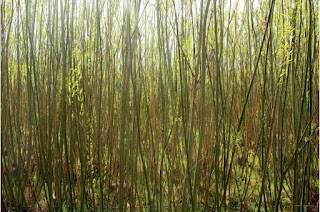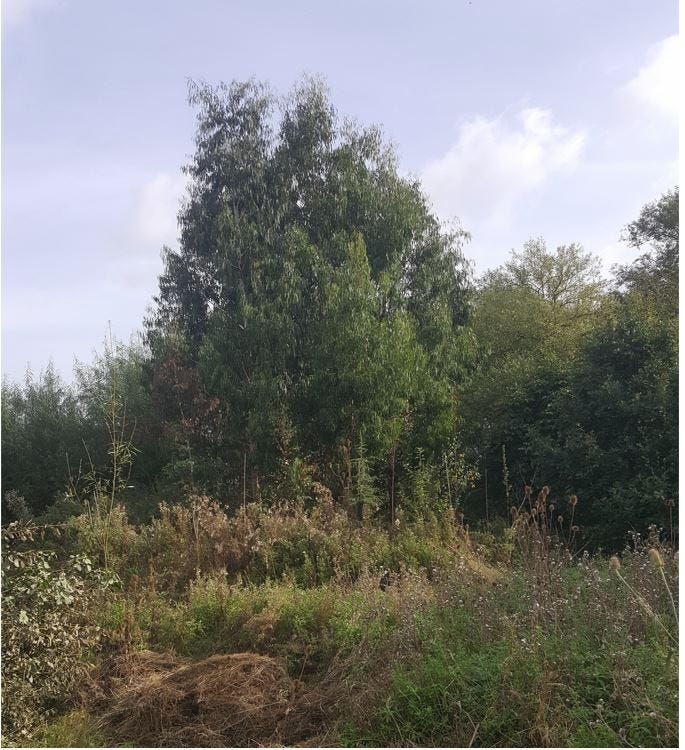Cairn Wood early History part 1
The area of Cairn Wood was literally bought off a man in a pub in 2007. I had been looking for a small wood to own for a long time. There are very few woods in the Trent Valley as it is mostly arable or pasture. I decided I would plant my own. The field had been planted with Basket willow, which had been neglected. The 8 acres were covered in a tangle of Willow much of which was 12 ' high and on 6" trunks.
 |
| Cairn wood during the clearing of the willow. |
I have no photos of the area before I started clearing it. The picture gives an idea of what was there. It also explains why I thought it would give me a source of outdoor exercise. I also thought it would provide an interest in my forthcoming retirement.
I had no clear vision of what I was going to do. Clearing the site was a first step and would provide time for me to decide what to plant.
 |
| Miscanthus. (Elephant grass) |
 |
| Willow grown for power stations |
Growing Biomass was, in my opinion the sensible thing to do. The government provided grants for Willow coppice and Miscanthus, a fast growing large grass. Both of these required specialist harvesting equipment. Contractors were not going to prioritise a mere 8 acres. The heavy clay soil would mean tractors might not be able to get on the land. The willow was full of canker, so short rotation forestry was chosen, which could be felled and processed by myself. The tree would be grown for a few years and could be cut down and dragged out, for cutting up for logs. Eucalyptus were the obvious species of tree. Potentially giving twice the calorific value per acre of willow. Initially several species were planted to see which did best.
 |
| Cairn Wood some of the surviving original Eucalypts can be seen in the back ground. They were planted 2008. The Oaks in the foreground were planted 2012. The photograph is 2019. |
I have been a climate change pessimist since the 1980's, and started with two ideas. The first was that just because a tree has grown well somewhere for the previous 2,000 years did not mean it would grow well there in 200 years time. At the time this was not the accepted wisdom. The clamour was for native trees from local sources. The Second idea was that most trees will grow in most places if given a start, whether they thrive is a different issue.
Eucalypts have had mixed fortunes, but have proved to produce the most dry weight and therefore calories.







